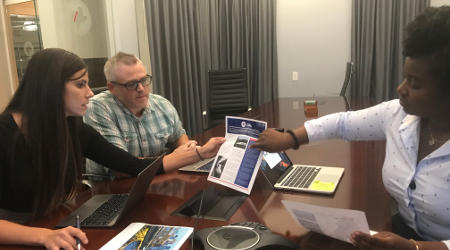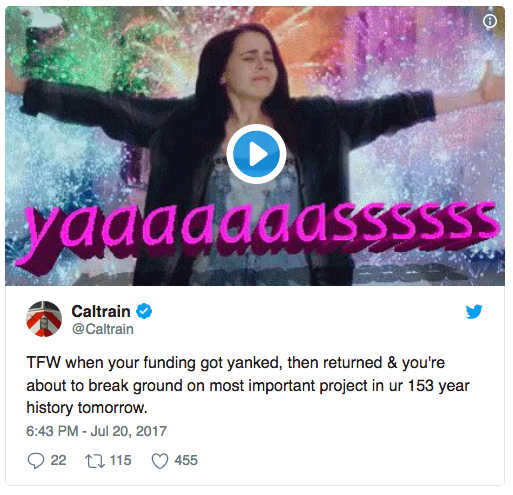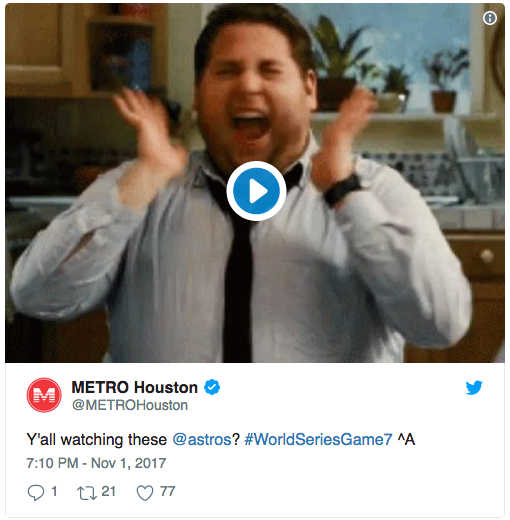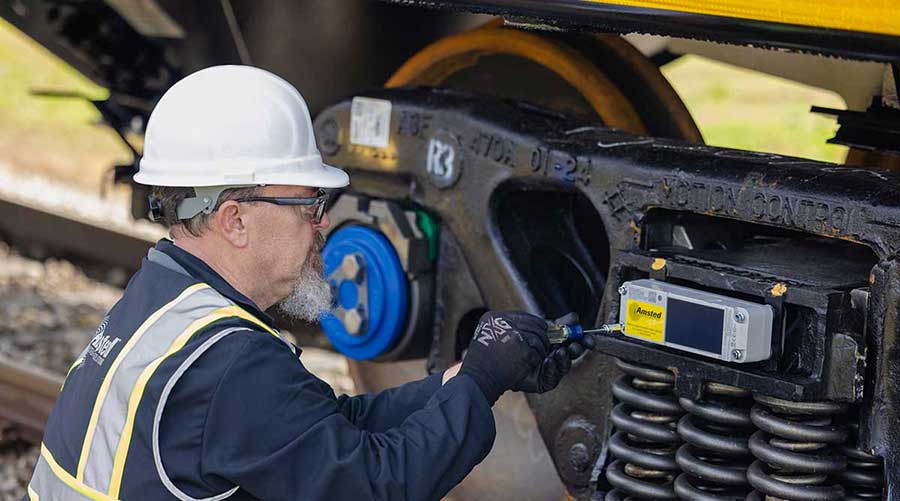Stay updated on news, articles and information for the rail industry
November 2017
Rail News: Rail Industry Trends
Passenger railroads try new social media tools to connect with riders

By Daniel Niepow, Associate Editor
In May, the Federal Transit Administration (FTA) signed off on a $647 million agreement to help fund Caltrain's long-awaited electrification plans. The FTA was expected to approve the funding agreement earlier in the year, but put the decision on hold for several months after California Republicans in Congress voiced concerns about the project.
The day before Caltrain finally broke ground on the $2 billion electrification effort in July, the railroad's social media team tweeted a cheeky 137-character summary of the funding dilemma. The message was accompanied by a "reaction GIF" to express Caltrain's excitement about the project:
GIFs, memes, videos and Instagram posts are among the latest social media tools that passenger railroads like Caltrain are using to interact with riders and stakeholders. The agencies' social media managers also are adding a little personality and humor to their posts on Twitter, Facebook and other online social platforms.
The primary purpose of passenger railroads' social media efforts is to provide real-time information about service disruptions. But social media can offer a way to connect with locals on big-picture topics, too. Case in point: Caltrain's electrification-related tweets. The aforementioned funding tweet ended up generating more than 450 likes on Twitter, as well as scores of retweets.
"One of the proudest things I've done here is man the social media guns for the political fight for the electrification money," says Jeremy Lipps, Caltrain's social media officer. "As a rule of thumb, I do stay out of politics, but in this case it really felt like the politics came to us. We were fighting for what was right."
But not everyone agreed. When one user responded with a facetious "you're welcome" tweet on behalf of taxpayers in other states who wouldn't be using Caltrain's services, Lipps hit right back.
"You're welcome back for all the freeways and transit systems across the country we'll never use that are also fed funded," Lipps tweeted from the railroad's Twitter account.
Of course, it can be a challenge to determine the best way to respond appropriately to negative attention on social media. But sometimes, these kinds of exchanges turn out to be a productive way to address locals' concerns or questions.
For example, Texas Central Partners LLC officials use social media to help clear up rumors about the company's plan to build a privately financed 240-mile high-speed rail line between Houston and Dallas. Social platforms enable the firm to craft more personal responses — and even convert some skeptics into project supporters, Texas Central officials say.
"You're not just getting a corporate bot or these high-level generic talking points," says Rebecca Cowle, outreach manager for Texas Central. "There's someone on the other end who's conversing with you, and people really respond to that."
To personalize social media messages, Texas Central incorporates reaction GIFs, memes and videos where possible. And on its YouTube channel, Texas Central shares testimonials from landowners and other stakeholders who would be affected by the company's construction plans.
The company has begun dabbling in photo- and video-sharing app Instagram, too. Trying new forms of social media like Instagram enables the company to reach a broader audience, Cowle says.
Reaching more followers — and riders — is a key goal of Dallas Area Rapid Transit's (DART) social media strategy. The agency has been active online for more than two decades, says spokesman Morgan Lyons. DART continued its foray into the digital realm by setting up Facebook, Twitter and YouTube accounts within a year of each platform's launch.
"Our broad strategy is really an extension of what we've always done: tell the DART story to many people as possible," Lyons says. "We reach them through their preferred channels of communication."
Plus, the agency can reach potential riders by catering to their interests. For instance, a few basketball seasons ago, DART scanned Twitter to find users who were chatting about Mavericks games in Dallas. The agency then used the conversations to promote its rail services to the nearby American Airlines Center, where the team plays.
"We tried to approach them as fellow Mavericks fans," Lyons says. "We found that we could have conversations with prospective customers and in some cases convert them. We have a few folks today who have really become champions for us online."
To continue finding potential riders, DART takes advantage of the wealth of data on social media platforms. Last year, the agency awarded a contract to AlphaVu LLC to "mine" that information. This involves combing through posts to identify what potential riders are talking about on social media.
"I would say a lot of executives used to think of social media as a pretty picture they'd post on Facebook to get a couple of likes," says AlphaVu President Scott Wilkinson. "We're really working to elevate that so executives across the industry understand this is incredibly rich source of strategic input information, just like a political poll is."
As far as humor goes, DART tries to limit the use of it to promotional posts or contests on social media.
"Riders aren't really interested in a joke if a train is broken down, but they could be interested in a light-hearted tone in a promotional post," explains Lyons.
Caltrain's Lipps has a slightly different take on when it's OK to apply some humor. He's not afraid to incorporate a self-deprecating joke about the agency's aging infrastructure when riders complain on Facebook about late trains.
"The humor sort of disarms people," Lipps says. "If you can poke a little fun at yourself, it takes a little of the sting out of the interaction."
Ultimately, railroads and agencies adjust their social media strategies depending on the situation.
"You don't have to be serious all the time — you can show some personality and be light hearted, just as long as you're able to pivot and speak with gravitas from one minute to the next," says AlphaVu's Wilkinson. "But, absolutely, agencies shouldn't be afraid to show some personality."
 Rail-Car Outlook '25: Definitely not 'Back to the Future' anytime soon — forecast by Richard Kloster
Rail-Car Outlook '25: Definitely not 'Back to the Future' anytime soon — forecast by Richard KlosterKeywords
Browse articles on social media passenger-rail social media Caltrain Caltrain electrification Jeremy Lipps Twitter Texas Central Partners LLC Rebecca Cowle Dallas Area Rapid Transit DART AlphaVu LLC Scott Wilkinson social media dataContact Progressive Railroading editorial staff.


 LRW Honors Amtrak’s Acheson As Railway Woman Of The Year
LRW Honors Amtrak’s Acheson As Railway Woman Of The Year
 From Editor-In-Chief Foran: Of Gender Equity And Inclusion
From Editor-In-Chief Foran: Of Gender Equity And Inclusion
 Spotlight On Some Of Today’s Rail Safety Products
Spotlight On Some Of Today’s Rail Safety Products
 Women of Influence in Rail eBook
Women of Influence in Rail eBook
 railPrime
railPrime







